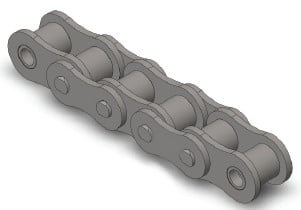? Type of input electrical power (electrical motor, inner combustion engine with mechanical or hydraulic drive).
? Type of tools to be driven.
? Amount of horsepower expected to provide suffi cient electrical power to your driven shaft.
? Full load velocity of the quickest working shaft (rpm).
? Desired velocity from the slow working shaft ( or even the essential speed ratio). NOTE: If speeds are variable identify the horsepower to become transmitted at each and every velocity.
? Diameters in the drive and driven shafts . . . This worth may possibly restrict the minimal number of teeth for that sprockets.
? Center distance with the shafts.
? Note the place and any space limitations that could exist. Typically these limitations are over the optimum diameter of sprockets (this restricts the usage of single strand chains) or the width on the chain (this restricts the usage of multi-strand chains).
? Conditions of your drive which includes a determination in the class of load (uniform, reasonable or hefty), extreme operating temperatures or chemically aggressive environments must be mentioned.
Abbreviations Used in Equations
N Variety of teeth about the big sprocket.
n Amount of teeth on the small sprocket.
R Speed in revolutions  per minute (rpm) of the significant sprocket.
per minute (rpm) of the significant sprocket.
r Velocity in revolutions per minute (rpm) of your tiny sprocket.
C Shaft center distance in chain pitches.
HP Horsepower rating with the drive motor or engine.
KW Kilowatt electrical power rating of drive motor or engine if using metric units.
SF Service Factor